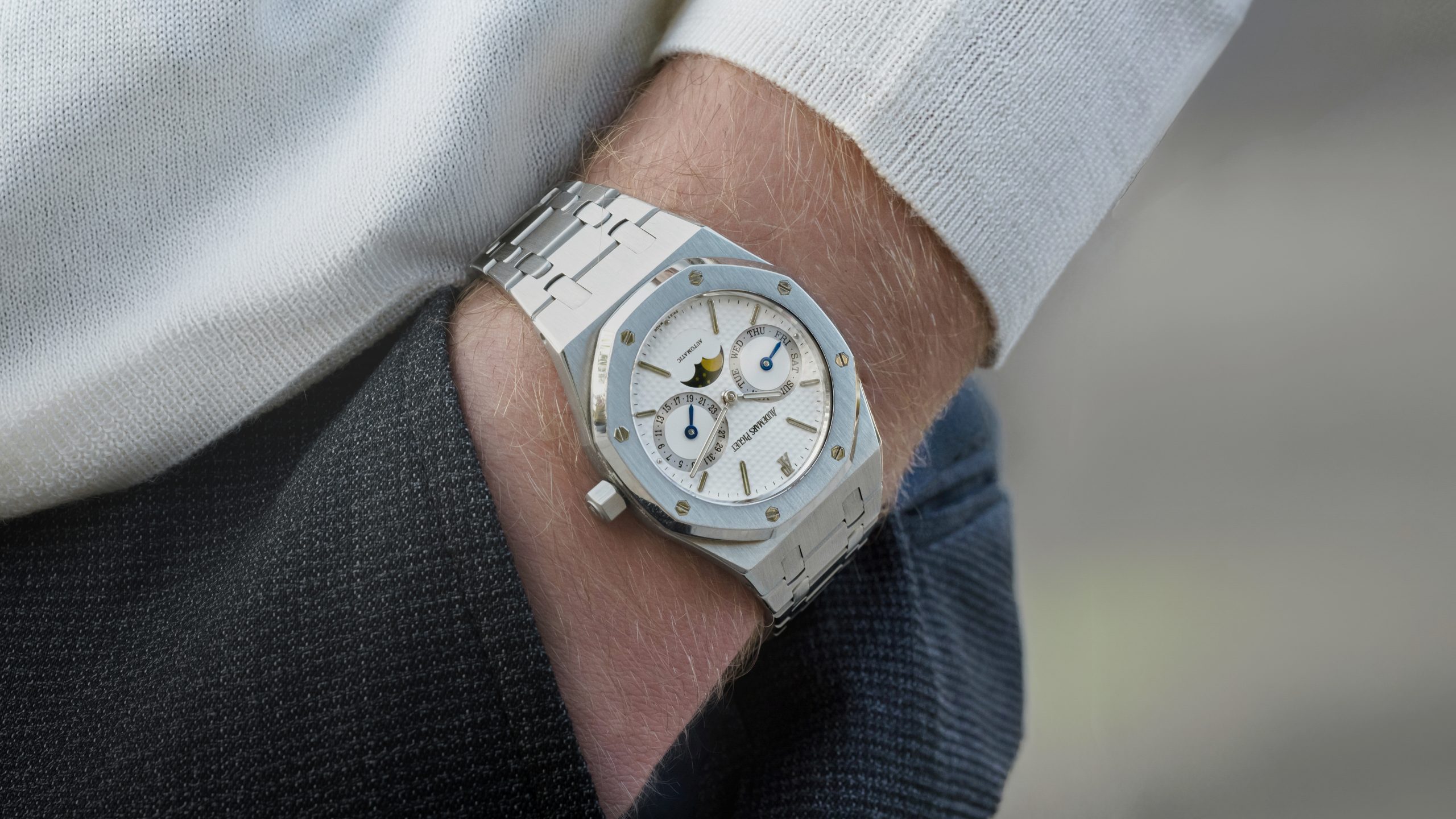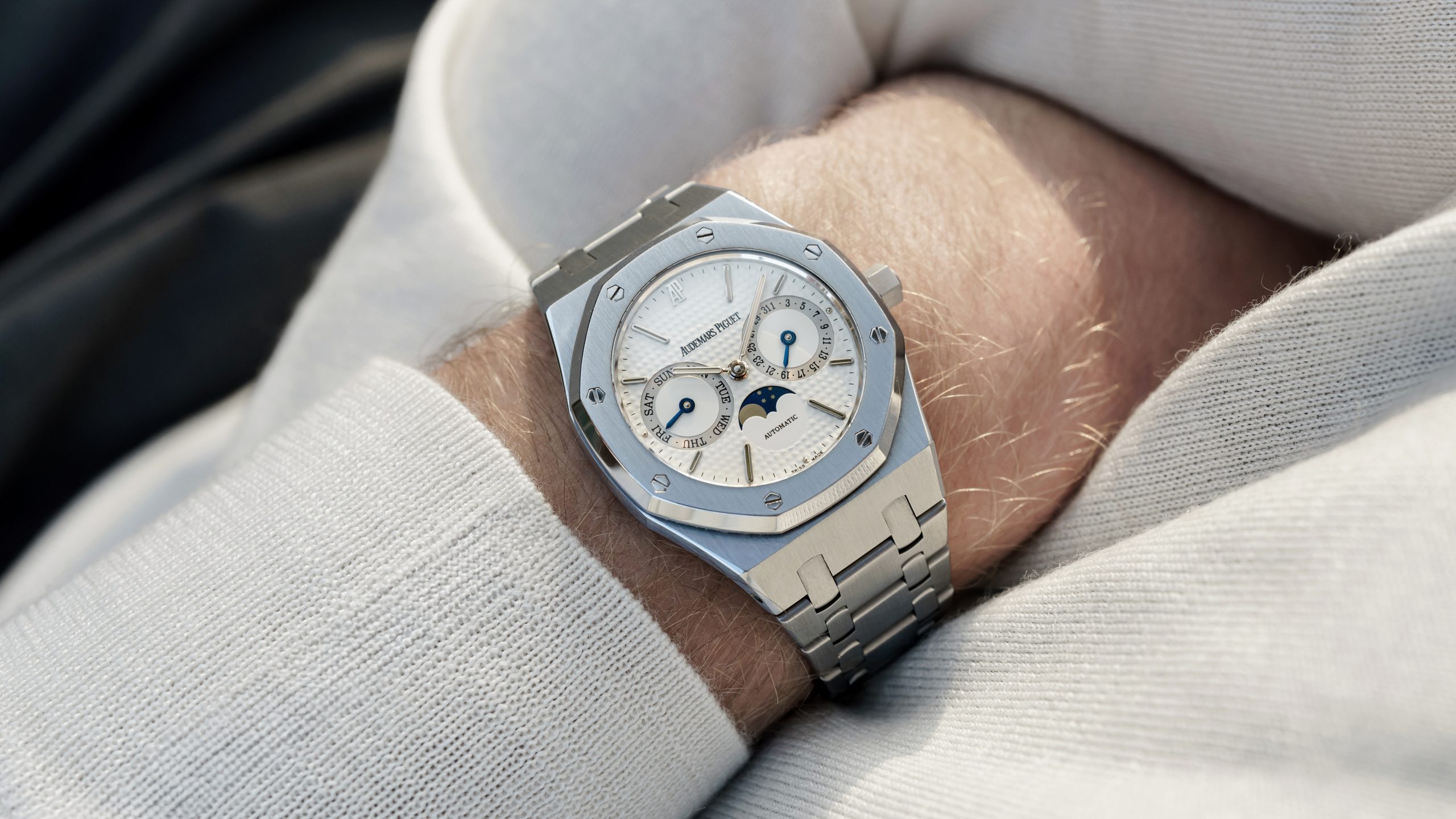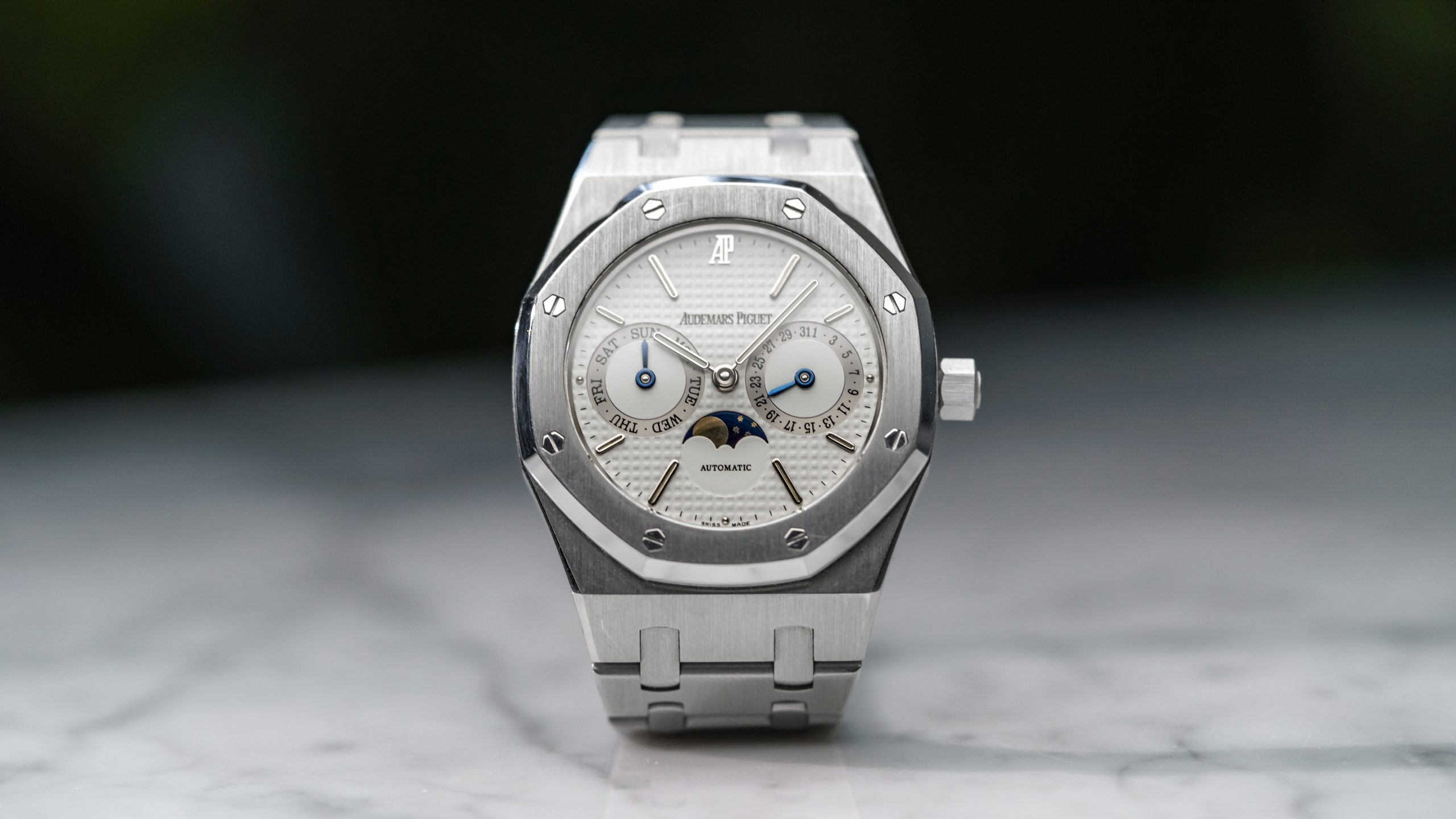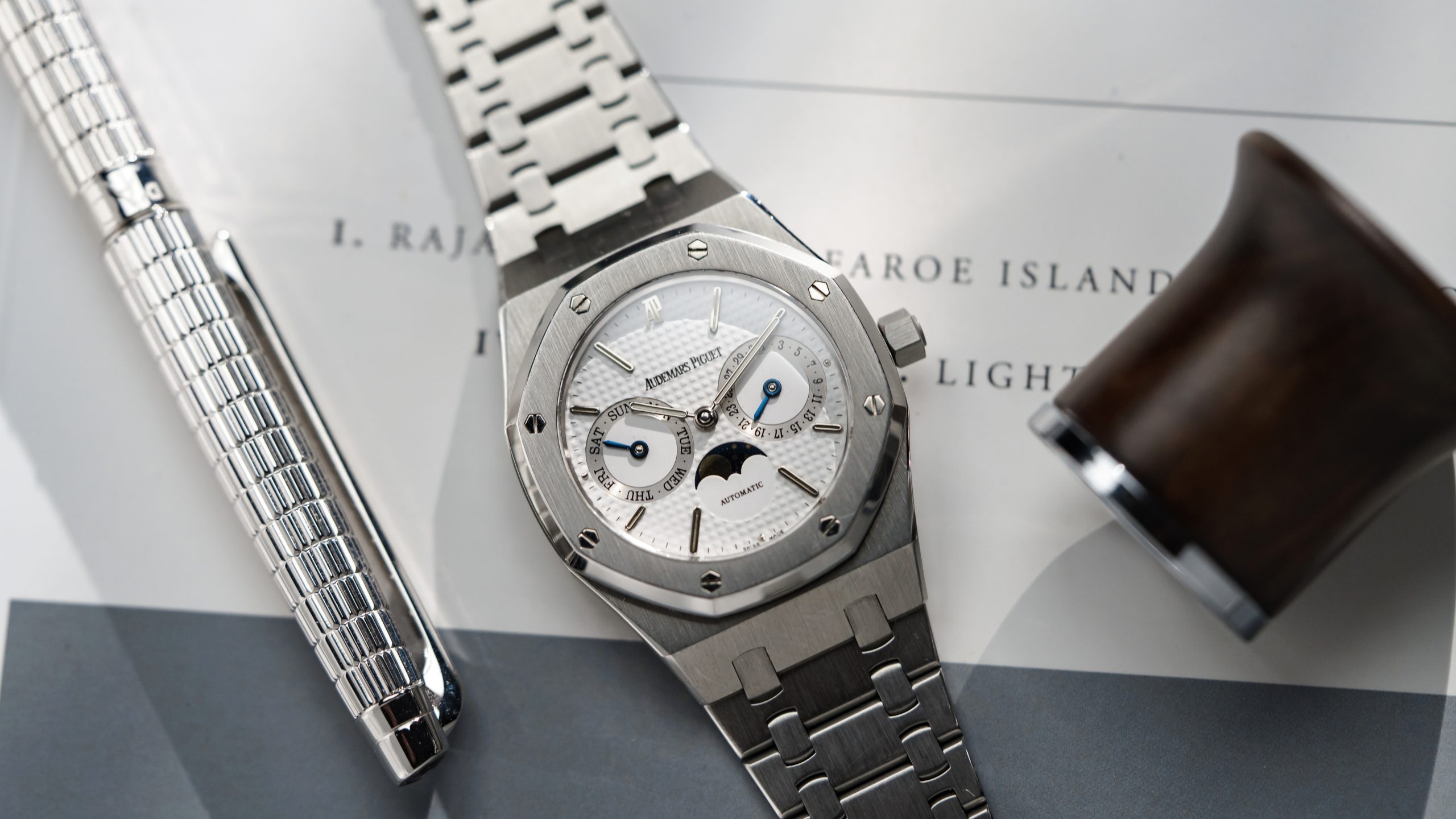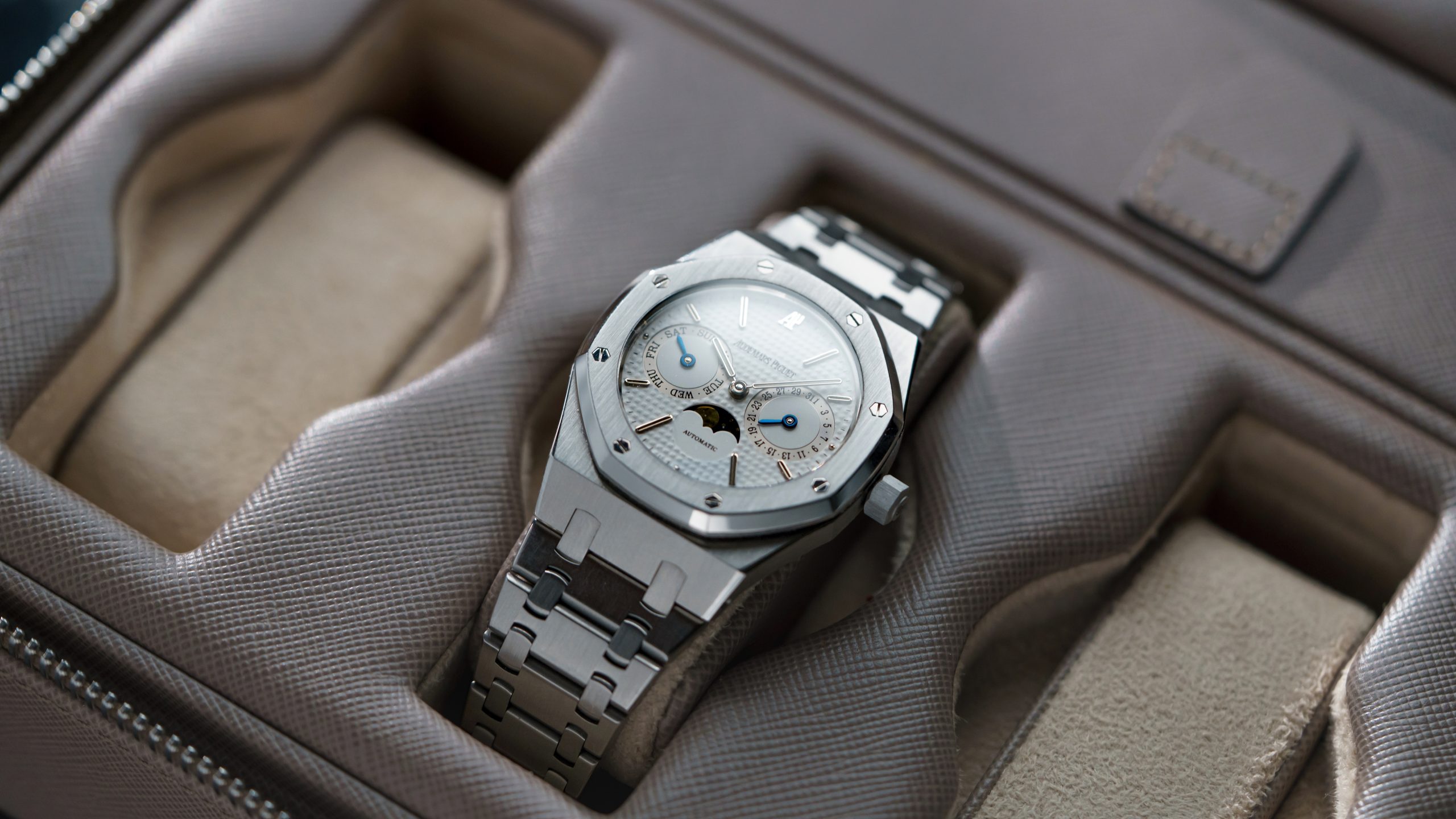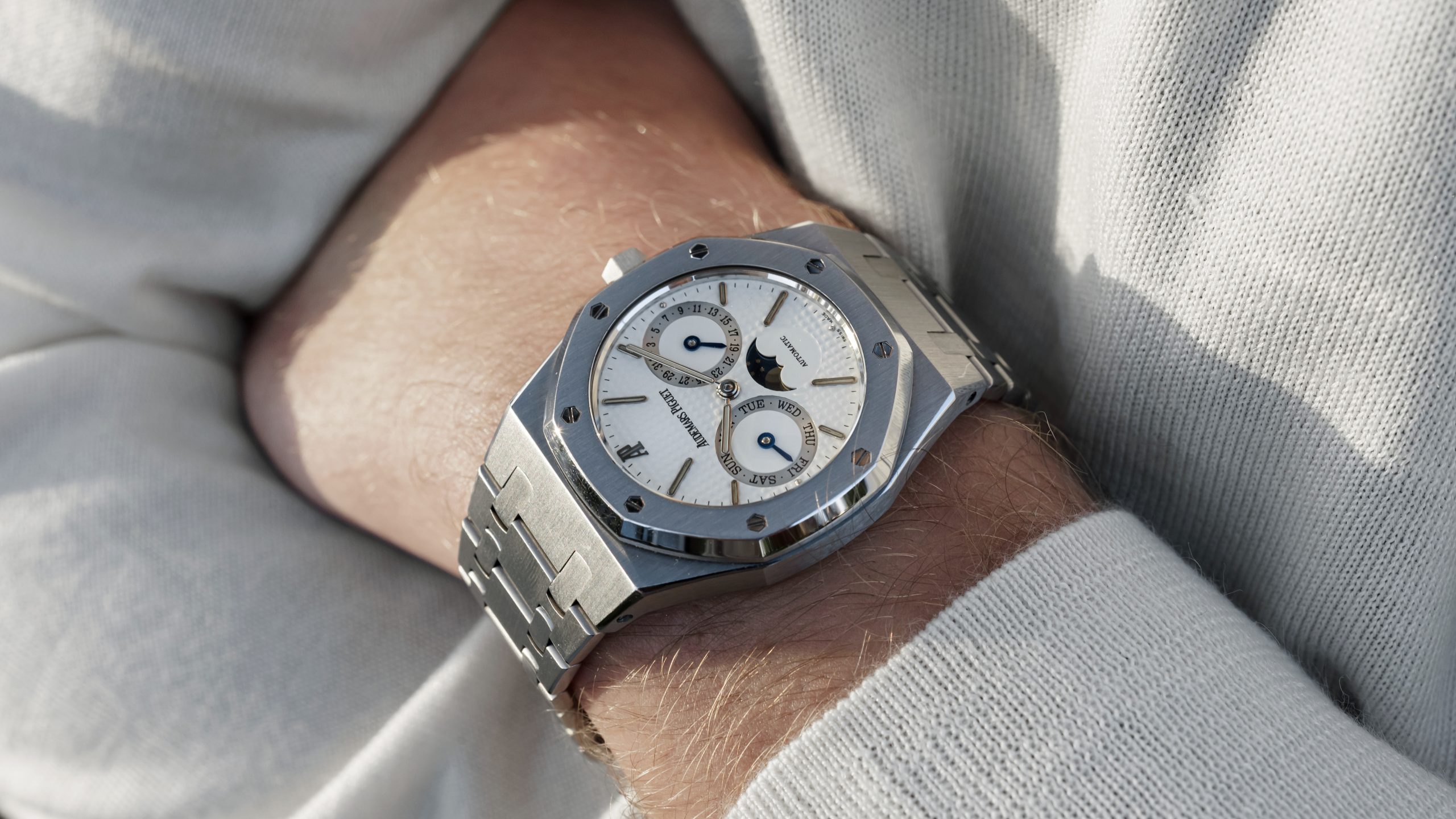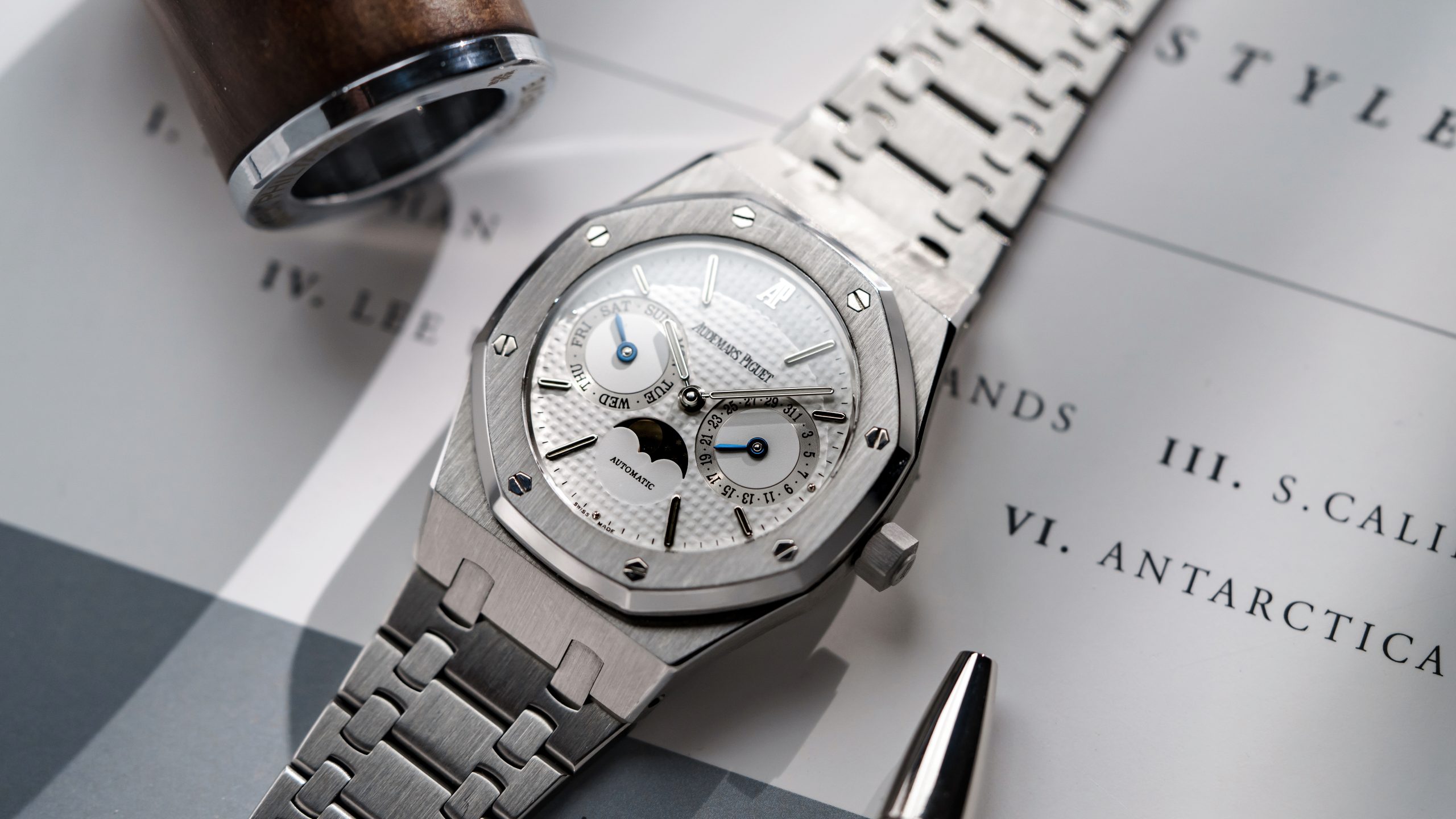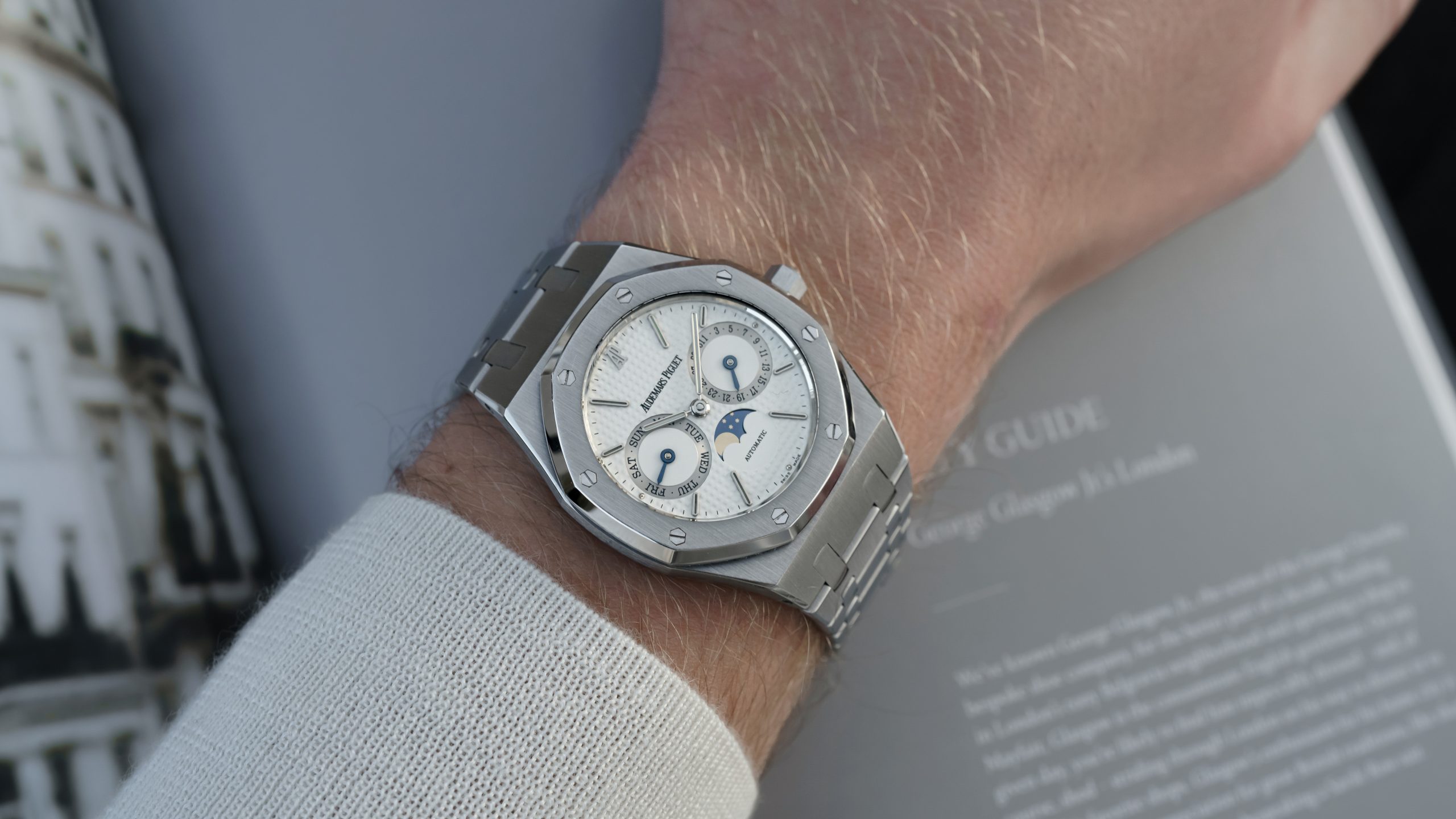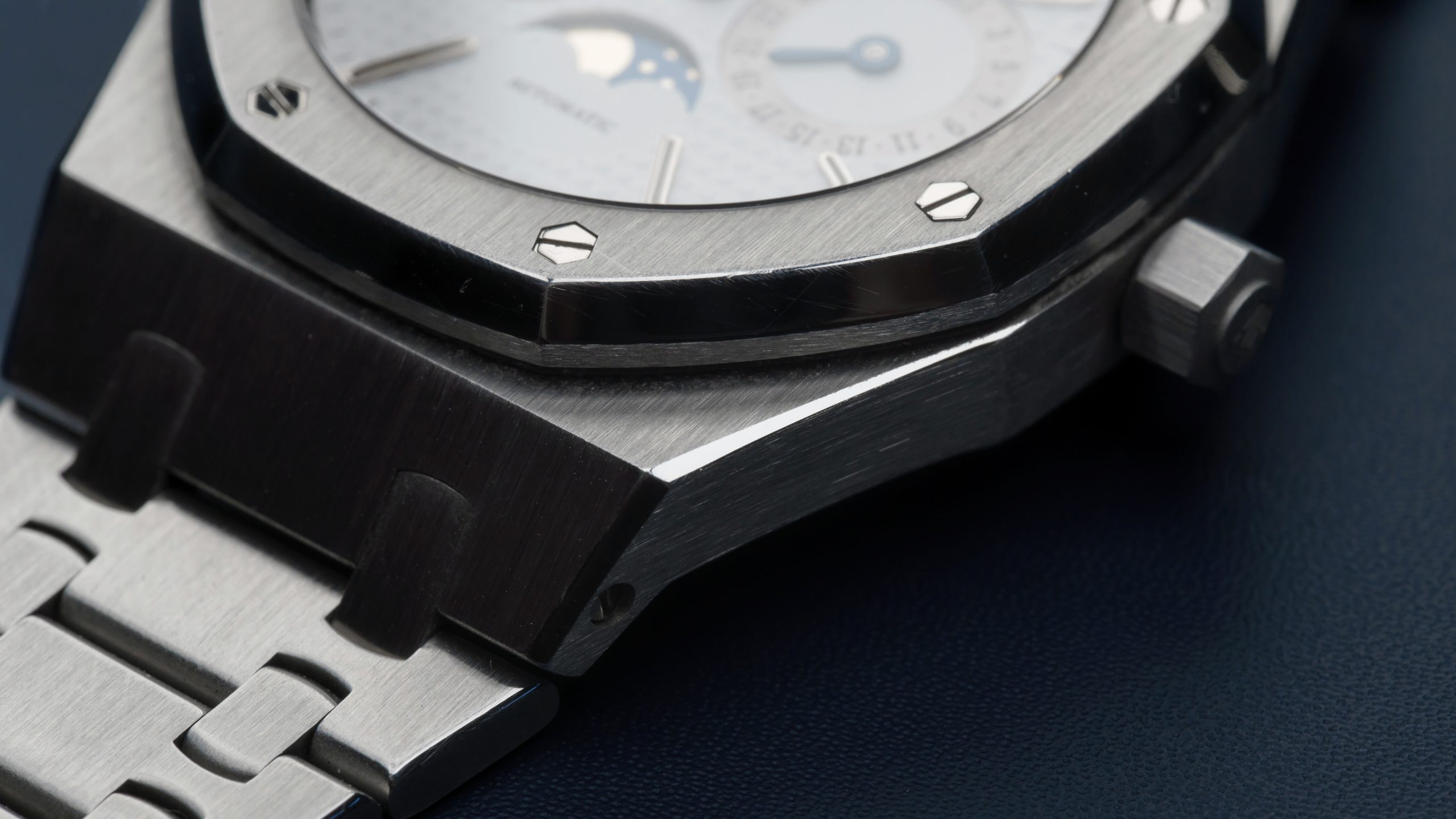Shortly after the debut of the 5402, Audemars Piguet became very experimental with the Royal Oak as a canvas. Aiming to bring the Royal Oak to the wider market, Audemars Piguet debuted the Day Date version of the Royal Oak, ref. 25572. Simultaneously, they had developed this Day Date Moonphase but only released it a year later. Both were some of the first complications in a Royal Oak case. This, the ref. 25594, proved an immediate success. It was such a strong model for Audemars Piguet that it was in fact the longest-lived Royal Oak model, in production from 1985 until 2006. That success is widely attributed to the inherent beauty of the dial design, it is no small wonder that collectors have bestowed it the name of 'The Owl'.
The success and subsequently large life-cycle of the 25594 saw many changes to the reference. It was introduced with this lovely petite tapisserie but somewhere near the turn of the century it was changed for the easier to manufacture grande tapisserie. It spanned the transition from tritium to Luminova, this is the former. Lastly, dials changed from the 'block' AP signature to mixed capitals. In total, there are around 10 dial variations, made by Stern. The 25594 was made in steel, bimetal, yellow, and white golds.
All were in the mid-sized 36mm proportion (a remarkable 9mm thin), with lovely sword subdial hands (here in blued steel), and the all-important moonphase. The 25594 was produced largely with with the calibre 2124/2825, but around 2001 changed to the calibre 2224/2825. This example, with a 2124/2825, a JLC ébauche with AP's own calendar works. It bears the same ceramic ball-bearing rotor-rail system as the 920.
Few Royal Oaks have housed the Day Date. Interestingly, there was no analogue from either Vacheron Constantin or Patek Philippe in period. It has a bit of the magic of the Royal Oak Perpetual Calendars, just more restrained. The 25594 has recently found an audience anew in the wake of increased attention in neo-vintage Audemars Piguet and mid-sized cases alike. The 25594 is one of the more romantic Royal Oaks, true to Audemars Piguet ability in complications yet restrained enough to be minimal. As a result, it has one of the most attractive dials of any Royal Oak. It harks back to a time when Audemars Piguet were more experimental and focused on watchmaking first.
